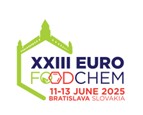Scientific journal
Journal of Food and Nutrition Research
Summary No. 3 / 2007
SKLÁRŠOVÁ, B. - ŠIMKO, P. - ŠIMON, P. - DROBNÁ, B.
Removal of polychlorinated biphenyls from water by sorption onto polymers
Journal of Food and Nutrition Research, 46, 2007, No. 3, s. 128-133
Peter Šimko, VÚP Food Research Institute, Priemyselná 4, P. O. Box 25, SK - 824 75 Bratislava 26, Slovakia. Tel.: 00 421 2 55574622. E-mail: peter.simko@vup.sk
Summary: Water and rapeseed oil were spiked with six polychlorinated biphenyls (PCBs), filled into polyethylene terephtalate (PET) as well as polystyrene (PS) cylindrical shape receptacles and PCB concentrations were followed within 72 h. As found, PCB concentration in water decreased considerably due to the sorption of PCBs onto walls of the receptacles. From the treatment of experimental data, diffusion and the distribution coefficients were obtained for all studied compounds. Comparing the area of contact surfaces of the receptacles and the calculated area of PCB films composed of PCB molecules it was derived that the PET surface was occupied by 30.4% while the PS surface by 52.7% of PCB film, what indicate better applicability of PS for removal of PCBs from water in comparison to PET. The results show that the mechanism of PCB removal can be characterised as a monolayer adsorption taking place on surfaces of the polymers. Regarding rapeseed oil it was found that PET and PS are inappropriate materials for the removal of PCBs from this non-polar matrix, because no distinct PCB adsorption was observed in this case.
Keywords: polychlorinated biphenyls; rapeseed oil; polyethylene terephtalate; polystyrene; adsorption, removal, diffusion, water
Download:
(pdf, 516.5 Kb, 971x)










